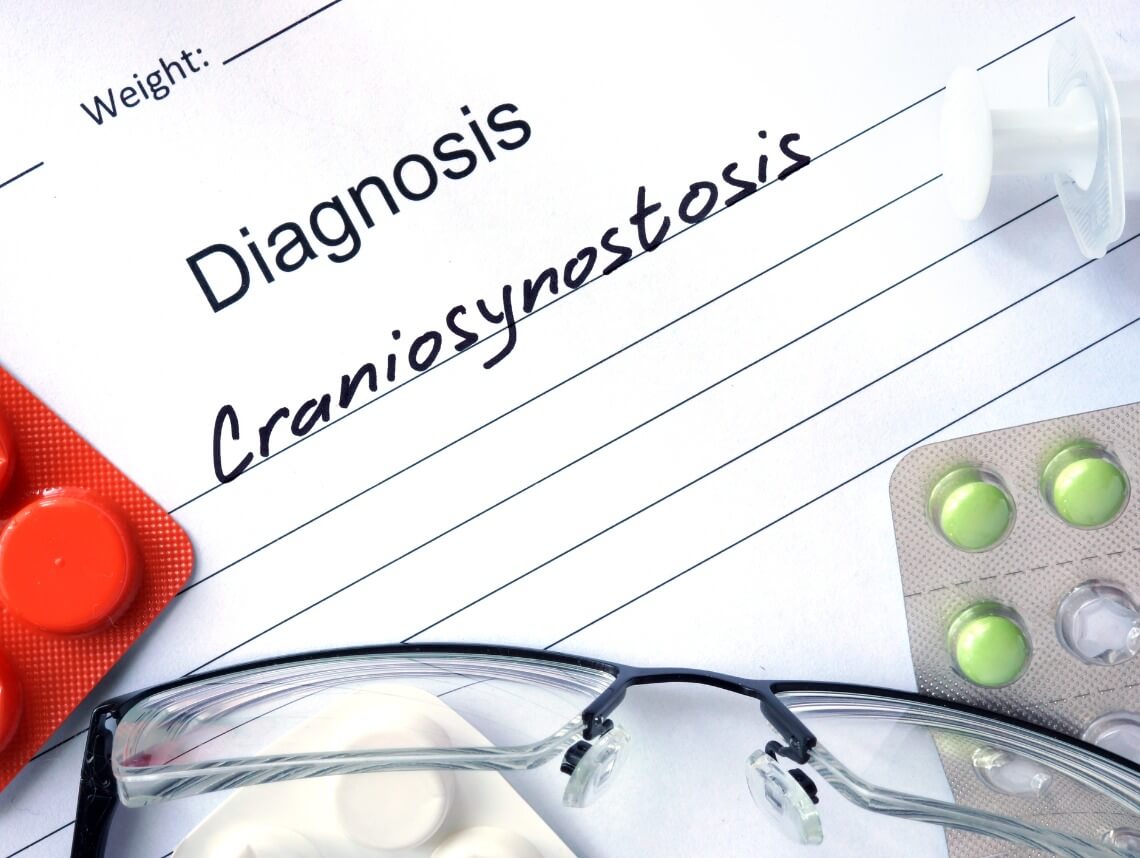Finding out your child has craniosynostosis can be a challenging time for any family and pose many questions. Although it is a serious condition, there are treatment options and most children can develop normally from a mental and emotional standpoint. Identifying and taking any necessary treatment steps is essential for the best possible outcome for craniosynostosis.
Parents and caregivers benefit greatly from educating themselves about craniosynostosis. The following overview of craniosynostosis can help you understand the causes, potential complications, treatment options, and care needed for children who have this condition. Being educated can help you work more closely with healthcare professionals to achieve a happy and healthy childhood for your little one.
What is pediatric craniosynostosis?
Craniosynostosis is a rare birth disorder where the plates of the skull begin to fuse prematurely during infancy. Because the premature closure occurs while the baby’s brain is still growing, it can result in the head becoming misshapen. In normal infant development, the joints between the plates of the skull, called cranial sutures, remain flexible so the skull can expand with brain growth.
Doctors estimate that craniosynostosis affects approximately one in 2,500 births in the United States.
Craniosynostosis usually involves early fusion of the sutures in one location, but it can develop in multiple spots, or fontanelles, in rarer cases. There are multiple types of craniosynostosis depending on the location, number of fusions, and the underlying cause. Types of craniosynostosis include sagittal synostosis, on the top of the head, and coronal synostosis, on the right and left of the head. Metopic synostosis is another type that can occur on the bridge of the nose, and lambdoid synostosis is a rare type that can occur along the backside of an infant’s head.
Pediatric Craniosynostosis Causes
In a very large number of cases, the underlying cause of craniosynostosis is not known. Medical researchers believe many types of craniosynostosis may be a combination of genetic and environmental factors. In other cases, craniosynostosis can be related to a number of genetic syndromes such as Apert syndrome or Pfeiffer syndrome that cause a misshapen skull in addition to other physical defects.
Pediatric Craniosynostosis Risk Factors
Because the cause of craniosynostosis is often not known, risk factors can be difficult to identify. According to the CDC, some research points to a correlation between maternal thyroid disease, taking certain medications, and the development of craniosynostosis. Researchers are still working to discover risk factors and causes for this condition.
Pediatric Craniosynostosis Symptoms
The most common symptoms of craniosynostosis that lead to a diagnosis of the condition include:
- A misshapen skull
- A raised hard ridge on the affected sutures of the skull
- Other abnormal facial or skull features, such as a triangular shape in the forehead for metopic synostosis
The key to a successful treatment outcome is early identification and steps that promote space in the skull for the brain to develop.
Diagnosing Pediatric Craniosynostosis
Diagnosing craniosynostosis usually requires specialized providers to be involved, such as a pediatric neurosurgeon or expert in reconstructive surgery. Diagnostic steps include:
- Physical examination
- Diagnostic imagery such as a CT scan or MRI
- Genetic testing in some cases
Pediatric Craniosynostosis Treatment
The mildest cases may only require a specially molded helmet to promote a healthy skull shape, although this is not common. In most cases, one or more surgeries will be required to address the fusion of the suture or sutures.
The primary goal is to reduce pressure on the brain to prevent damage and allow for normal cognitive development. Cosmetic surgical procedures can also help to treat the shape of the skull. Depending on the type of procedure and severity of the condition, molded helmets may be needed during the recovery process.
Caring for a Child with Craniosynostosis
Babies and children with craniosynostosis can have a wide range of care needs, depending on the type and severity of the condition, as well as the presence of other syndromes. Children may need help with nutrition, helmet use, and administration of medication, particularly during surgical recovery.
In a large number of situations, families benefit from the assistance of pediatric home health, especially during infancy and early childhood. A qualified home healthcare professional can be a key member of your family’s care team, helping your little one reach key developmental milestones.
Contact Care Options for Kids for Home Health Care
It can be hard to balance your time between work, home, and caring for a child. That’s why our team of skilled professionals at Care Options for Kids is here to help. We have been enforcing precautionary measures and following the Centers For Disease Control (CDC) guidelines for COVID-19 to ensure the safety and health of our clients and employees.
Our home health care services offer one-on-one support in the comfort of your home. We refer loving and competent nurses to provide customized care for families — from a few hours a day to around-the-clock supervision. Contact us directly to speak with a home health care professional or request a free in-home assessment. Together we can determine the best plan of action to keep your loved ones happy and healthy.
If you or a loved one are considering Pediatric Home Health Care Services, contact the caring staff at Care Options for Kids. Call today at (888) 592-5855.






